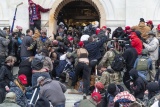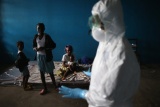Judith Matloff

Judith Matloff teaches crisis reporting at Columbia’s Graduate School of Journalism. She trailblazed safety training for women and media organizations around the world, helping hundreds of journalists survive an increasingly dangerous world.
Over 40 years as a journalist, she has covered top international stories including Rwanda’s genocide, apartheid and the rise of Vladimir Putin. Her essays have appeared in The New York Times Magazine, Forbes, the Financial Times, The Los Angeles Times and The Wall Street Journal. Earlier in her career, Matloff headed the Moscow and Africa bureaus of the Christian Science Monitor and she spent a decade reporting for Reuters from various countries.
Matloff consults for leading organizations around the world, and has pioneered protocols for digital, gender and physical security. Clients have included NBC, the United Nations, the Society of Professional Journalists, Doc Society, Magnum, the State Department, the Knight Center for Journalism in the Americas, the International Women’s Media Foundation and the American Federation of Television and Radio Artists. Her training company, Security Rules LLC, offers workshops for a wide variety of dangerous situations.
Matloff’s latest book, How to Drag a Body and Other Safety Tips You Hope to Never Need, shares expert advice for nearly every conceivable peril. She earlier published No Friends but the Mountains, which drew a link between geography and conflict; Fragments of a Forgotten War, about Angola’s civil war; and Home Girl, which chronicled a Harlem street run by a drug gang.
A graduate of Harvard, her work has won the support of the MacArthur Foundation, the Fulbright and Logan Nonfiction programs and Stanford’s Hoover Institution.
Recent Posts by Judith Matloff

Safety Tips for Domestic Terrorism
March 25, 2021 by Judith MatloffThe following tips are some safety considerations for journalists and editors. Among issues to consider are potential mass casualty assaults on infrastructure or places where many people gather, as well as planned assassinations on politicians or other public figures.

How to Safely Cover Riots and Civil Unrest
June 2, 2020 by Judith MatloffCovering civil unrest can be frightening and dangerous. A crowd may turn violent with little warning and police can target journalists or mistake them for rabble rousers. It’s particularly challenging to maintain social distancing during a riot, so take extra precautions to stay on the edge for quick exit. Bring extra masks, gloves and sanitizer for gear.

Covering Ebola: Reporters Speak
October 10, 2014 by Judith Matloff“There is no protocol; people are grasping for information," photographer Glenna Gordon says. This piece was originally published in Columbia Journalism Review
Documenting Rape in War
July 28, 2011 by Judith MatloffIt takes a delicate awareness of cultural sensitivities and ethics to report on sexual violence without causing victims further distress or danger.
- View All Posts By Judith Matloff